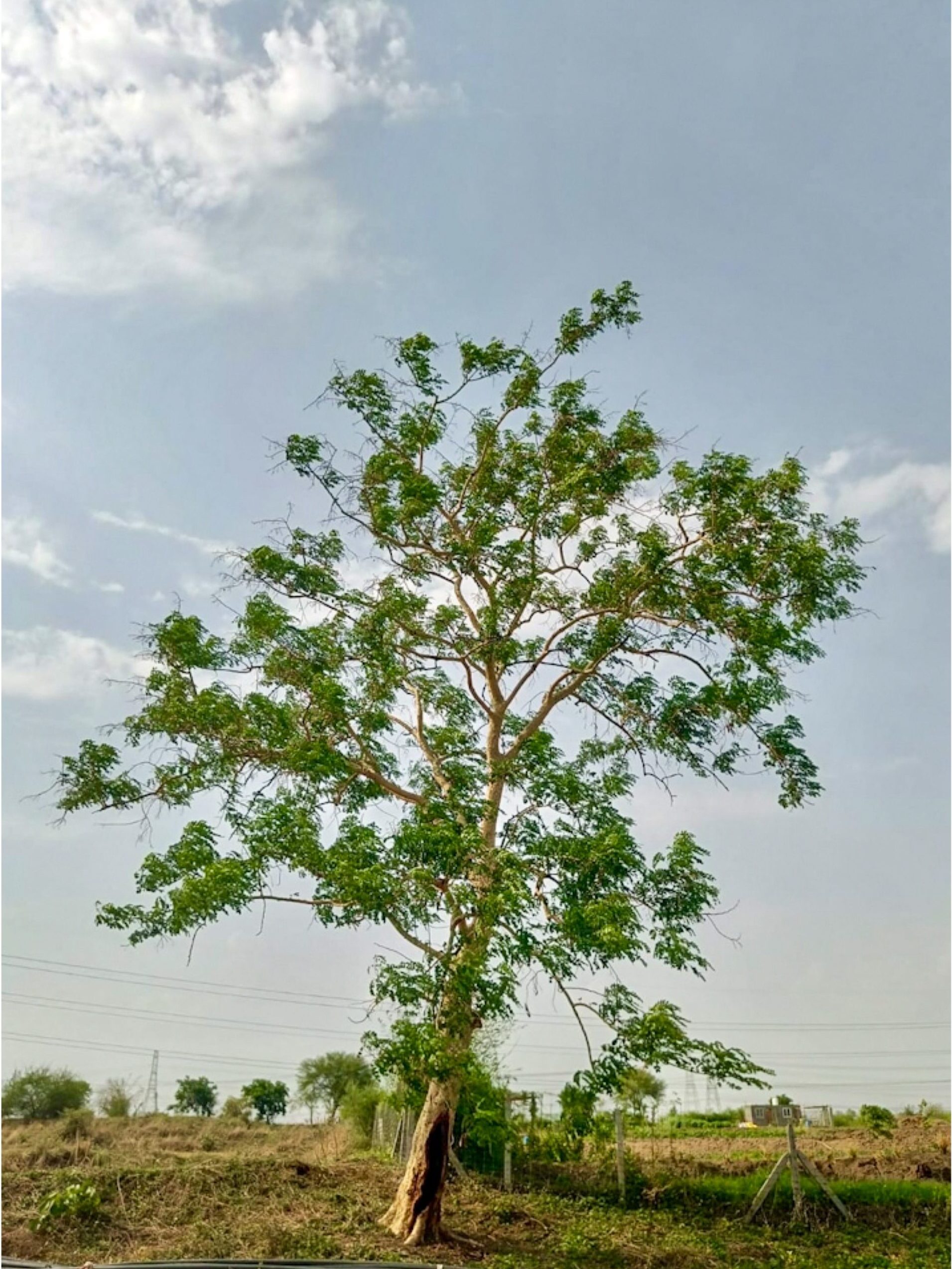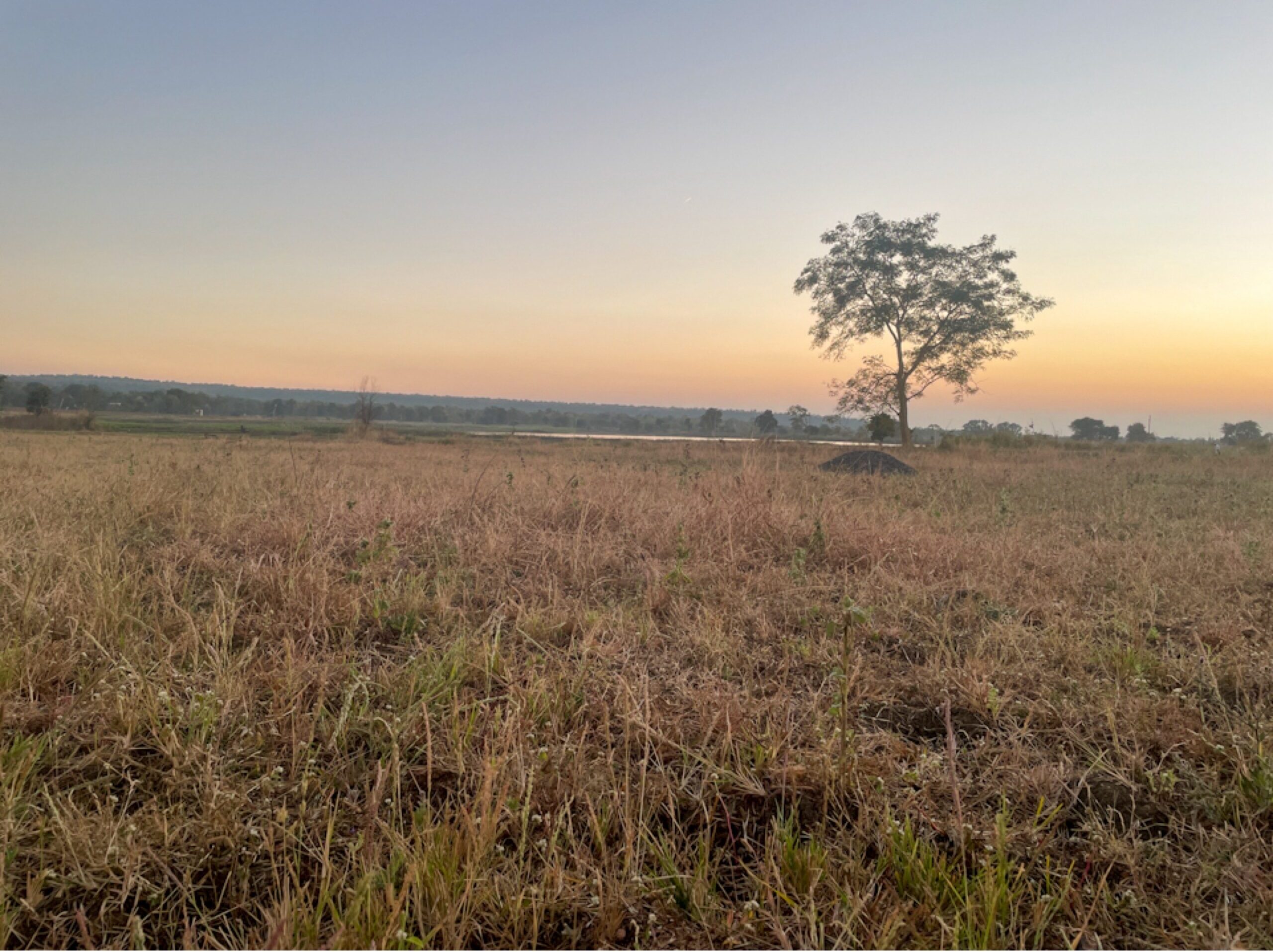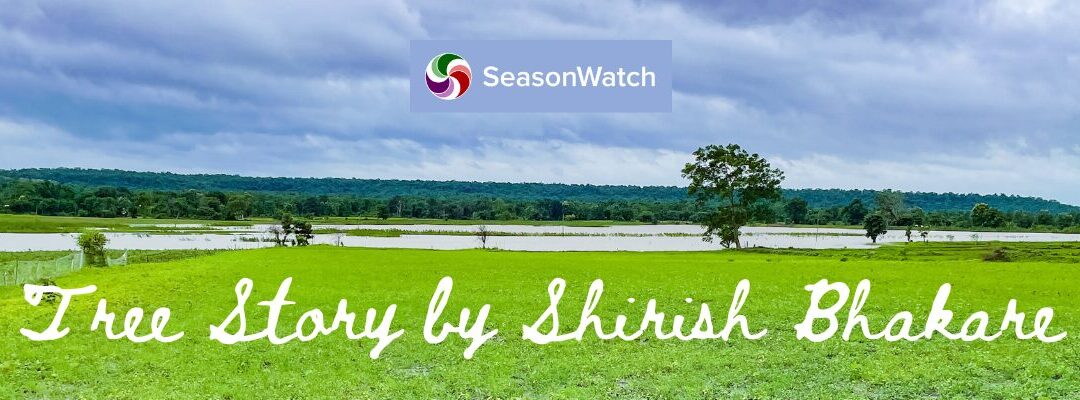Standing tall and alone on the edge of Tadoba Tiger Reserve, I’m Khinni.

The place where I stand is not for the faint of heart for I see the most prolific changes in weather over a year.
I stand on the edge of a lake adjoining farmlands. I’m the tallest of all and look at the entire backwater of Chandai dam. The babul tree, the gulmohar and the teak all look so tender and small in my presence. I also keep an eye on the emerald green forest that houses the ones whom humans fear the most – The tiger, the leopard and the bears.

In monsoons, the water level from the lake increases and washes my feet. My feet are drenched for almost three to four months before the winter set in. At the onset of monsoons, humans do a lot of paddy farming around me as water is plenty and then disappear only to come occasionally to check if their farms aren’t destroyed by the wild boars and deer.
While during most of the monsoon, no human dared come close to me for fear of crocodiles and getting stuck in black cotton soil, I was the sole support for the kingfisher who used my arms to watch over the lake for frogs and small fish in abundance. A few more birds accompany the regular kingfishers, who depend on insects on the nearby farms. My leaves turn dark green and my skin is purest white. Hence after the monsoon, I’m fresh and glowing white like a bride. This also gives me my popular name, White Siris.

Standing here for ages now, I have seen the seasons go by. Come winter, it is this time of the year that I start seeing a lot of human activity around me. Water starts receding and crops of farmers are ready to be cropped. It is harvest time and festival time for many humans. This is also the time I start evolving as my skin colour becomes more reddish. It’s the beginning of flowering and bearing pods for the next generations. I have known no other Khini to have come nearby maybe the water level is too high for young or seeds are flown down the canal on the lake. Come winter I overlook swathes of agricultural land in the green backdrop of Chimur hills which is home to the largest big cat of Tadoba, Chota Matka.
Tigers I have seen it frequently in summer. As the water recedes further, I find it difficult to nourish the green leaves. As if going on a diet, I give away my leaves and pods and look dull and gloomy without them, however, I’m very much alive as my roots are deep. Termites love my bark and that’s where they thrive. Once the water is cornered in the lake, I start seeing the majestic cat more often along with other wild animals like jackals, wild dogs and bears. The predators come to hunt for the wild boar who hide in Besharam foliage growing on the edges of receding water. The farmland becomes dry and human activity again becomes limited as the sun heats the earth.
It is this period of the year which I find the most difficult. The air is dry, the water has receded and it is difficult to survive. I have lived here for ages and I know how to tackle the scorching sun. I penetrate my roots deeper to tap into the nutrient-rich underground water and that makes me even stronger.
I have been standing here alone. I have seen many seasons come and go. It’s now my turn to be part of the food chain and let the wood ants live on my juicy barks. I will still stand tall as long as I can knowing seeds from my pods have already forested Tadoba at many places.

All photos by Shirish Bhakare.
About the Author – Shirish Bhakare is a corporate trainer in the automotive industry and has worked with brands like Mercedes-Benz and Honda cars. He loves spending time in forests observing nature and is an autodidactic naturalist who spends his weekends at his farmhouse in Tadoba. Shirish also does wildlife photography as a hobby and blogs his experience to create awareness about forests, wildlife and conservation topics in the urban populace.





